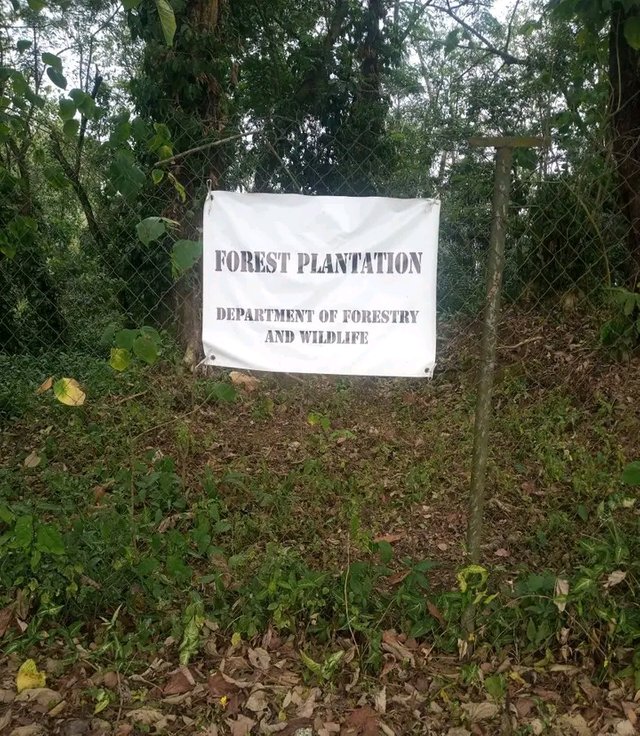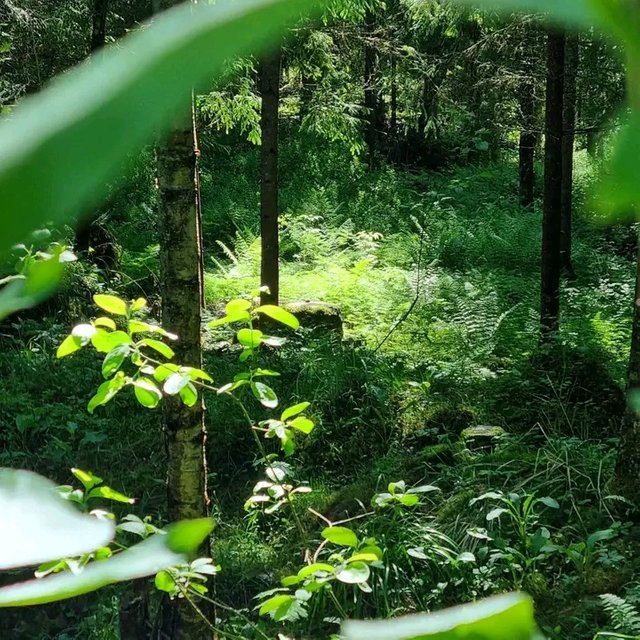Basic Knowledge in Agriculture #45
Hi steemit
Basic Knowledge in Agriculture
When most people hear the word “agriculture,” what comes to mind is the lay man's understanding of agriculture the planting of crops and rearing of animals While that is true, agriculture is far bigger than just planting of crops and animal farming . It is the very foundation of human survival because it is through agriculture that we feed ourselves, clothe ourselves, and even build our shelters. Agriculture is not limited to farmlands; it stretches into forests, rivers, and every natural resource that sustains life.
One important aspect of agriculture that is often overlooked is the forest. Forests are part of the agricultural environment, and without them, agriculture itself would be incomplete. Understanding forests, their importance, the types we have, and the role they play in wildlife conservation gives us a broader knowledge of agriculture. It also makes us appreciate how deforestation can affect not just the environment but also our daily lives. Sometimes people see forest as deadly and old fashioned but in some places it is one of the respected and valued natural resource
Importance of Forests
Forests are more than just a collection of trees. They are living systems that support human life, animals, and the environment. First, forests provide us with oxygen. We all know that during photosynthesis, trees take in carbon dioxide and release oxygen, which humans and animals depend on. Without forests, the air we breathe would not be as clean as it is.if all the trees are cut down we all know our stands
Secondly, forests act as a natural shield against climate change. They absorb harmful greenhouse gases that attract heat in the atmosphere. This is why countries that still have large forest areas experience cooler and more stable climates compared to areas with fewer trees.
Forests are also a source of food, medicine, and raw materials. Many fruits, herbs, and even the wood used for furniture or paper come from forests. In many rural areas, people depend on forests for firewood and fruits. Beyond food and shelter, forests also play a key role in water regulation. They help maintain rivers, prevent flooding, and keep the soil fertile by reducing erosion.
Finally, forests provide beauty and peace it screams nature eases pains its sight is comforting Imagine walking into a thick forest where all you hear is the sound of birds and rustling leaves. It creates a natural sense of calmness. That is why eco-tourism and national parks are important sources of income in some countries
Types of Forests
Not all forests are the same. Depending on their location and the climate, forests are grouped into different types. The most common ones are:
- Tropical Rainforests These are found near the equator, where there is plenty of rainfall all year round. They are rich in biodiversity, meaning they have the largest variety of plants and good-looking animals. The Amazon forest in South America and the Congo forest in Africa are examples.
- Temperate Forests – These are found in regions with moderate rainfall and temperatures. They usually have four distinct seasons which are spring, summer, autumn, and winter. In these forests, trees often shed their leaves in autumn.
- Boreal Forests (Taiga) Found in colder regions, especially near the Arctic, these forests are dominated by coniferous trees like pine and fir. They are important and crucial for timber production.
- Mangrove Forests – These are unique forests found along coastlines, especially in tropical and subtropical regions. They help protect shorelines from erosion and serve as breeding grounds for many fish species. They keep seafood
Each type of forest plays its own role in balancing the environment and supporting agriculture. For instance, tropical rainforests are known as the “lungs of the earth” because of the amount of oxygen they produce, while mangroves help fishermen sustain their livelihoods thereby giving us protein and nutrients
Wildlife Conservation
When we talk about forests, we cannot ignore wildlife. Forests are home to thousands or rather millions of species some of which are still unknown to humans. Wildlife conservation simply means protecting animals and their habitats to ensure they do not go extinct.
Why is this important? Because wildlife maintains balance in the ecosystem. For example, birds help in pollination, while predators keep other animal populations in check. If one species disappears, it affects the entire chain of life.
Conserving wildlife also has economic benefits. Many countries earn revenue from tourism when visitors come to see wild animals in their natural habitats. Example Kenya’s safari parks or South Africa’s game reserves without wildlife, these attractions would not exist they make natural immunity
Sadly, hunting, poaching, and deforestation threaten wildlife. Some species are already endangered because their homes the forests are being destroyed. That is why creating wildlife reserves, enforcing anti-poaching laws, and educating people about the importance of wildlife are part of agricultural responsibility.
To help protect those animals in their habitat
Effects of Deforestation
Deforestation is the clearing of forests for human activities such as farming, construction, or logging. While development is necessary, cutting down trees without proper replacement has dangerous effects on agriculture and human life.
The first effect is climate change. Deforestation increases the amount of carbon dioxide in the atmosphere, which contributes to global warming. irregular rainfall, and flooding we see today are partly due to large-scale deforestation.
Secondly, deforestation leads to loss of soil fertility. Without trees, the soil is left exposed, and heavy rains wash away the nutrients. This makes it difficult for farmers to grow crops, leading to food shortages.
Another major effect is the loss of biodiversity. When forests are destroyed, animals lose their homes, plants disappear, and entire ecosystems collapse. Species that could have been useful for medicine or food are lost forever.
Finally, deforestation disrupts water cycles. Trees play a big role in attracting rainfall and maintaining rivers. Without them, rivers dry up, droughts become common, and even hydroelectric power generation is affected.
Conclusion
Agriculture is more than food production it is the entire system that supports life. Forests are at the heart of agriculture because they provide oxygen, food, water, and shelter for both humans and animals. Knowing the types of forests helps us appreciate the diversity of nature, while wildlife conservation reminds us that protecting animals is also protecting ourselves.
Deforestation, on the other hand, shows us how fragile the balance of nature is. The more we destroy forests, the more we invite disasters like climate change, food insecurity, and loss of biodiversity.
If we want agriculture to keep feeding future generations, then protecting our forests should not be an option but a responsibility. The truth is simple: no forests, no agriculture, no life
Inviting @ukpono @kwinberry @mercybliss


This post beautifully explains how forests are the backbone of agriculture, sustaining life, wildlife, and climate stability. Protecting forests isn’t just environmental—it’s essential for food security, biodiversity, and our future. Truly insightful and thought-provoking.
Thanks very much for engaging
You are welcome
Here I must confess I have learnt seriously from your write up , most important aspect is your sense of relation on "Forest"
Felicitaciones amiga @etoro, su escrito trajo mucho aprendizaje, expusiste una clase magistral de Botánica, los tipos de bosques con sus características puntuales, la importancia de ellos en la sobrevivecia de todos los seres vivos, abordaste el tema de la deforestación como parte importante en el desequilibrio de todo el globo terraqueo y la conclusión excelente.
Saludos cordiales y éxito.🙋♀️🇨🇱